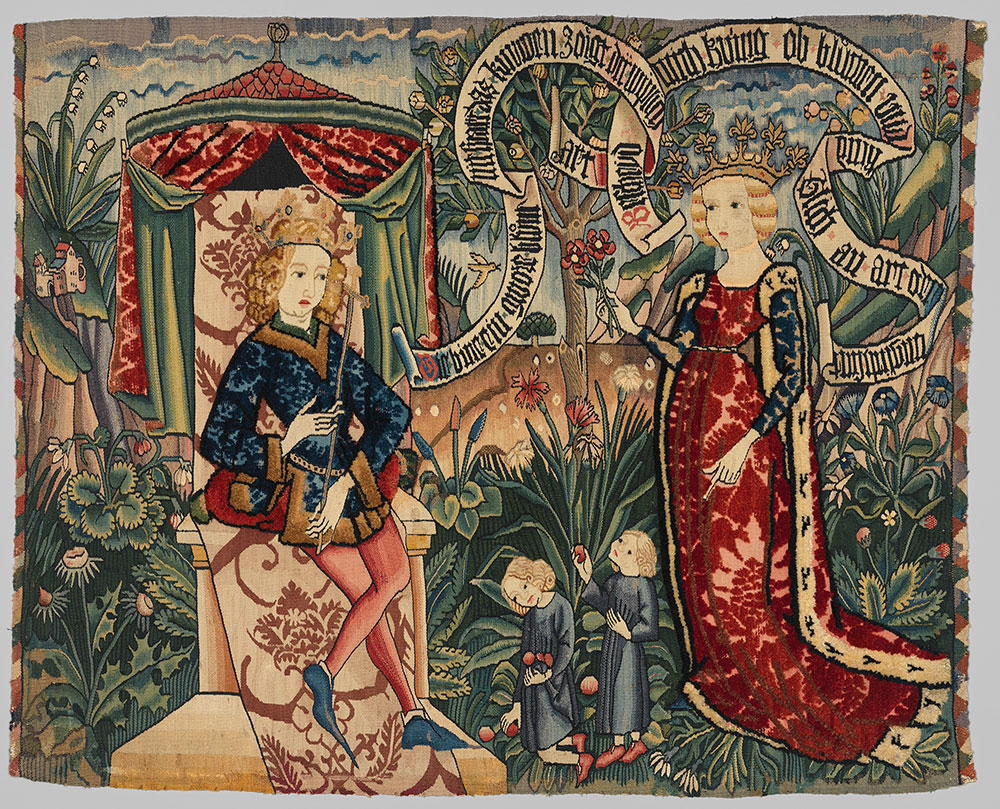
Queen of Sheba Tapestry
The Metropolitan Museum of Art, New York; 1971.43.
The Cloisters Collection, 1971.
Jesse Erickson:
This captivating tapestry depicting “Solomon and Sheba” is steeped in legend and the riddles surrounding it. After Morgan’s passing in 1913, his extensive collection was dispersed and the “Solomon and Sheba” tapestry was acquired by the firm of French and Company. Over time, it found its way to W. Hinckle Smith of Philadelphia before eventually being acquired by the Metropolitan Museum of Art. Dating back to the late fifteenth century, this German Upper Rhenish tapestry, possibly from Alsace, is small in size and exceptionally well-preserved.
One aspect of “Solomon and Sheba” revolves around the riddles depicted in the tapestry. It is believed that the core of the riddles draws from myths connected to Semiramis, the legendary queen regent of the Assyrian Empire. Recent scholarship into the riddles’ origins, moreover, suggests that they can be traced to Jewish sources that influenced early Arabic-Persian versions. The tapestry’s scene, featuring Solomon seated on a throne accompanied by Sheba, with children gathering apples between them, is rich in symbolism. Sheba says, “Tell me, king, if flowers and children are unlike, or unlike in their kind.” Solomon has to identify which is the real flower, which one is artificial. He has to identify which of the identically dressed children is a boy, which is a girl. He solves the first riddle by releasing a bee with the expectation that the bee would recognize the scent of the real flower. The second riddle is solved by throwing apples before the children knowing that the girl will kneel down to gather apples in her robe and that the boy will pick them up in his hands. Here Solomon says, “The bee does not miss a real flower. Kneeling shows the female sex.”
